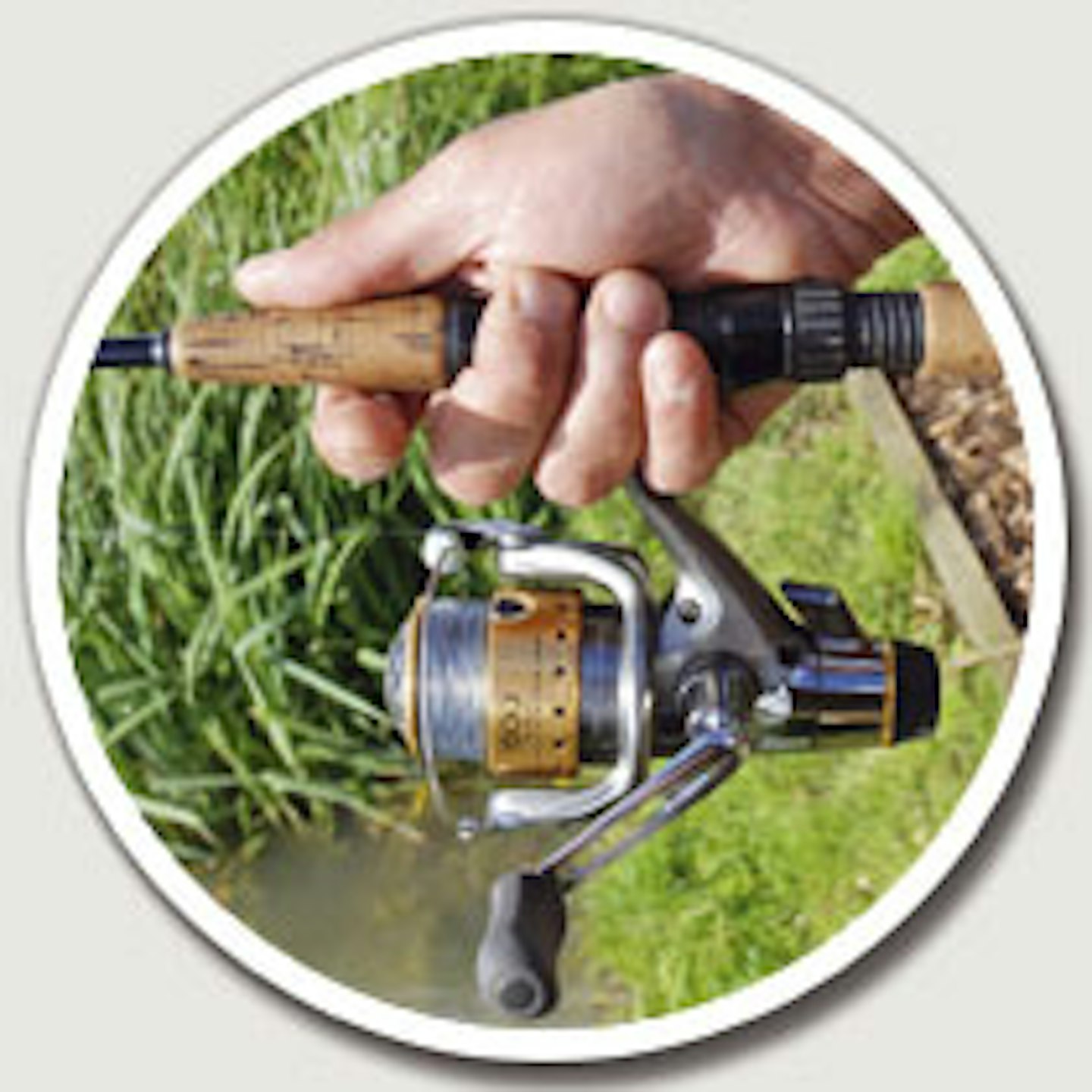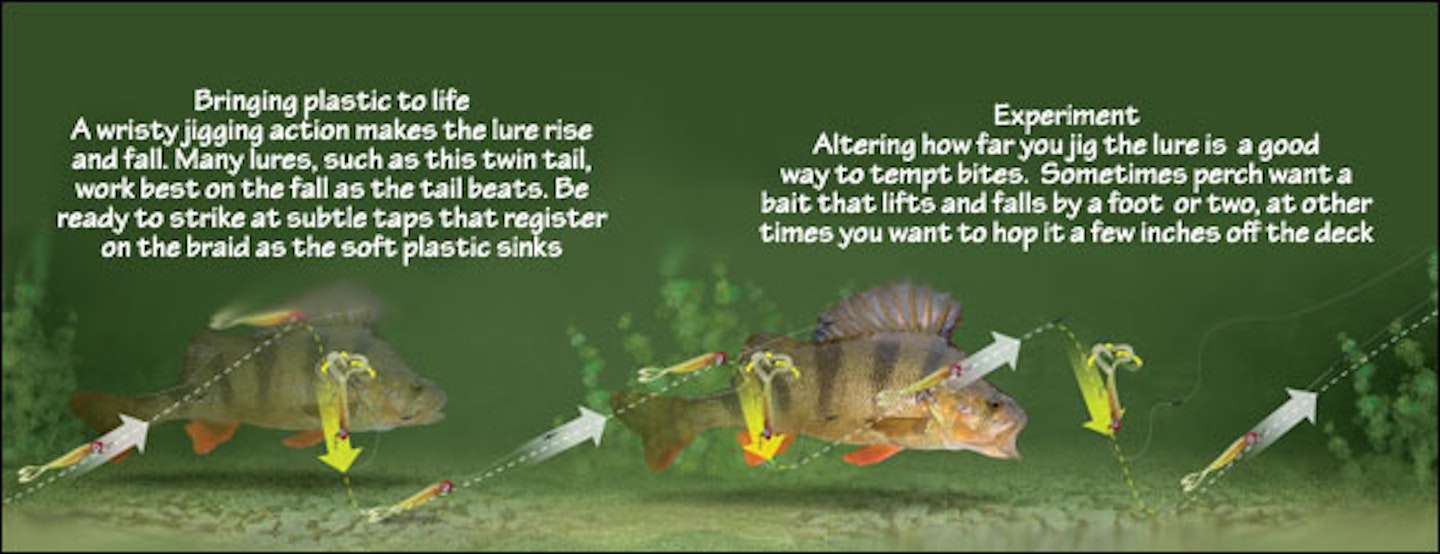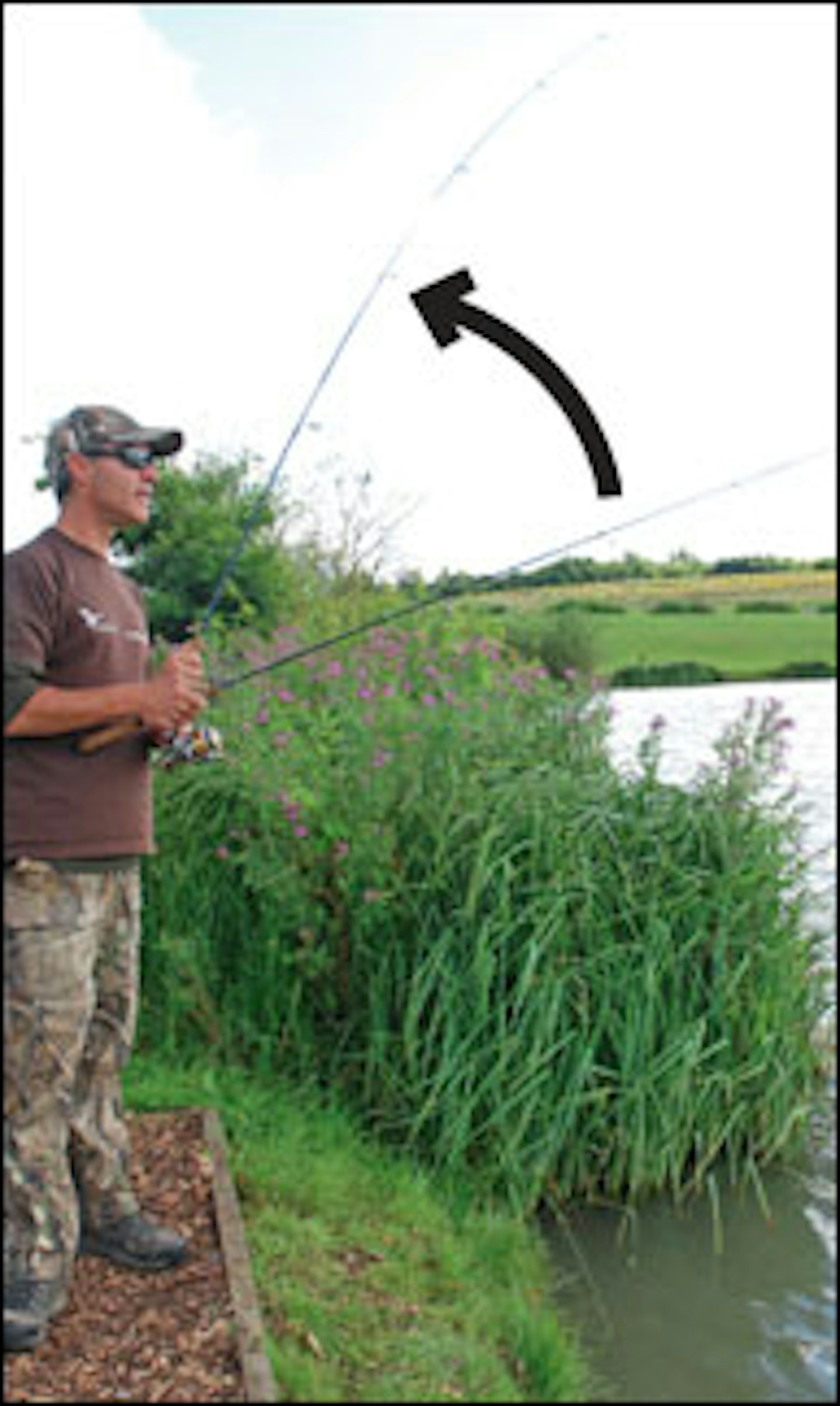Matt Hayes shows how simple and cheap lure fishing bags specimen perch at this time of year
Bold, aggressive and built to kill, perch are the secret assassins of modern stillwaters.
While most anglers would instantly respond with the word ‘pike’ when asked to name a freshwater predator, the perch has now become top dog in the food chain on many venues.
With many managed waters now devoid of pike, the perch has become the number one predator and in venues boasting a large stock of prolific breeders – typically carp, roach and bream – the source of prey food has risen to banquet levels.
There’s never been a better time to be a perch as the record number of specimens in our lakes testifies.
What’s more, autumn is prime time for perch fishing. Cooler temperatures, less intense sunlight and shorter days means perch can exploit their predatory advantages to the maximum.
As the clarity of water improves and the perch reach a fever pitch of aggressive hunting behaviour, a golden opportunity is created for outstanding lure sport.
Lure fishing – the use of an artificial bait to mimic a fish – is best when predatory fish are active and the clarity of the water is good.
Every autumn I spend a few days fishing for specimen stillwater perch and I often rely on a family of lures known as soft plastics.
These fish-shaped rubbery lures come in thousands of designs, sizes and colours but each is supposed to trick a perch into thinking the target is a small prey fish.
So, as we enter ‘perch time’, I’m going to detail tackle and tactics needed to catch stripies on soft plastics.
The advice I’m giving you will be a good guide to fishing over the next month or two and then again in late March and April when spring feeding conditions mimic those you find now…

Get the right kit
Working a soft plastic lure on an old float or feeder rod really isn’t good enough and if you’re going to lure fish properly you need a few bits of kit that will do a specific job.

Here’s a list of tackle you need, but the good news is you won’t need to remortgage the house. Lure fishing only requires you to buy a few pieces of relatively cheap tackle:
1 - Light lure rod
You need a short, lightweight rod which is comfortable to hold all day, one which is responsive to the lure as it’s worked through the water.
A 6ft-7ft carbon lure rod, with a casting weight rating of 5-15 grams is ideal. I’ve got a couple of old Shimano rods that are no longer available but I suggest you look at the Fox Elite Jig lightweight (£85-ish), the 7ft Berkley Series One Spin (approx £70), the Abu Sapphire Crest Spin rod at about £45 or the Daiwa Regal (£30) and Super Shinobi rods (£70).
2 - Reel and braid

Of all the kit you need a braided mainline is arguably the most important. The almost total lack of stretch in braid, compared to monofilament with a stretch factor of 20%-25%, delivers a host of advantages.
First, thin modern braids cast better, giving your casting greater range than with mono.
Second, due to the lack of stretch and the ultra fine diameter in braid, the lure instantly reacts to any movement of the rod. Thin braid with a breaking strain of 10lb-14lb is needed to cope with the stress of repeated casting and striking. While a 100-yard spool costs around £16 it is more durable than mono and will last two or three years of normal use. What might appear a major cost will become a value for money buy in the long run.
3 - Lures
Most obviously you’ll need to buy some soft plastic lures and a few bits of terminal tackle that go with them. The enormous choice of lures can be bewildering so in this feature I will reveal my top five lures to help you short-circuit the baffling array and pick the best ones.
If you are fishing a water that also contains pike you’ll need some wire lure traces so they can’t bite off your lures.
Making a soft plastic lure come to life

One of the key skills to catching on soft plastic lures is making them behave like fish.
Although many soft lures aren’t coloured like a roach or rudd, their shape and size mimics a small silverfish and you’ve got to get the lure to move as a prey fish would.

This is where the cast and retrieve plays a crucial role.
The most common mistake I see made by newcomers to soft plastic lure fishing is that they are far too violent with the movement of the rod tip.
They rip the lure through the water with fast, whipping movements of the rod tip that not only fail to subtly ‘jig’ the lure but make it do somersaults!
This isn’t the way to catch wily perch. Just put yourself in the position of a specimen predator and you’ll soon see why.
A wildly jumping lure looks suspicious to a big predator as prey fish just don’t swim like that. There’s little chance of a big old perch chasing down a lure leaping all over the place.
When you are using braided mainline, which allows you to feed every inch of rod tip movement through to the lure, you work the bait with flicks of the wrist.
Thanks to the zero-stretch braid, the lure will hop along the deck with a series of soft and subtle lifts of the rod tip backed up by winding of the reel to take up the slack line.
The pictures (above and right) shows how I make a soft plastic lure hop along the bottom using a short ‘jigging’ motion of the rod tip.
I generally use a 12-inch flick of the rod tip to make the lure hop. If the fish are particularly aggressive I will try a slightly bigger movement but in winter, when the fish are less active, a flick of 6-8 inches is all that’s required.
Rigging up a soft plastic – how a jig head works?
One thing that confounds many newcomers to soft plastic lures is the subject of jig heads. Probably because they are alien to any other sort of fishing, many anglers don’t know what they do and how they are used.
Put simply, a jig head is a mini leger with a hook built into it. The hook is speared into the front end of a soft plastic lure which is then carefully threaded down the shank until the head of the ‘fish’ butts against the back of the jig head.
The jig head not only makes sure the lure actually sinks but it also gives it an aerodynamic casting weight located right at the front end of the bait. Not only will this produce good distance on your casts but it also means you can accurately land the lure next to any feature you expect will hold perch.
I use small jig heads weighing 1/32 of an ounce up to half an ounce. They are light enough to produce a lure that hops smoothly with a gentle jigging action yet are heavy enough for you to feel as they rise and fall in the water. This allows you to register the precise moment a perch grabs the bait and interrupts the cycle.
One final point. Rather than tie the jig head direct to the end of the braided mainline, which many people do, I prefer to connect it to a 2ft long leader of 15lb-20lb fluorocarbon line with a clip on one end and a swivel on the other. The swivel is attached to the braided mainline and the clip goes on the ring on the front end of the jig head.
There are two reasons for this. First, fluorocarbon line is stiff so this short length of line acts like an anti-tangle boom that stops the lure wrapping round the braid on the cast and becoming snagged in it.
Second, because perch have brilliant eyesight it is not beyond the realms of possibility that they may be able to see braided line running direct to the lure. As fluorocarbon is invisible underwater it may offer you an important edge if you’re fishing for wary specimens.
How to use a jig head
- This photo shows a shad-style soft plastic lure and the rounded jig head weight I prefer
- To mount the plastic on the jig start by spearing the hook point in the front ‘head’ end of the lure
- Now thread the rubber shad round the bend of the hook and down the shank of the jig
- The hook point sits mid-way along the lure with the jig head giving great casting weight
Search the water – find your fish
Unlike carp, bream or tench that roll, leap or cruise near the surface, perch are harder to pin down.
As I said at the start of the feature if you don’t have any background knowledge on areas with ‘form’, start your search by heading for swims with structure and/or depth.
Submerged trees and reeds are obvious starting points but in swims with little cover look for areas with extra depth.
I’ve caught perch down to a depth of 30 feet and I suspect they like feeding in deeper water because there is lower light penetration. Perch will be able to use their great eyesight to better effect as they ambush fish that can’t see them.
It is also essential to search each swim methodically with a precise fan-casting technique.
The diagram (right) shows how I approach a swim by making a series of precise casts from left to right. By searching every inch of the water I can be sure the lure has been drawn past any fish in the area.
Perch are suckers for a moving bait which why you often catch them on-the-drop when waggler fishing with a maggot or worm. Working a lure through a series of narrow channels gives perch every chance to see the lure working.
Once you’ve done this – it’ll probably take you 20-40 minutes – you need to up-sticks and move swims.
Because you only need a rod, net and a small bag of lures to go perch fishing with plastics, there is no need to weigh yourself down with lots of kit. Once you’ve exhausted a swim pack up your gear and move on, you could have a change of fortune in another spot.
However, don’t let a failure to catch in one swim make you write it off as a dead area. If you feel confident a swim should produce perch because it has lots of structure or form for producing the goods, be prepared to return to the same spot later as the daylight fades.
On bright days especially, perch that didn’t feed in the middle of the day will go on the hunt at dusk.
Picking the perfect plastic – Matt’s top five perch jigs
I’ll readily admit I’m obsessed with lures. I can’t help it. Try as I might, if I see a lure that’s not in my collection and think it might catch me a fish I have to buy it!
When I’ve been on family holidays to the mecca of lure fishing – the USA – one of my highlights of each trip has been a visit to the Bass Pro chain of tackle shops.
Whether they are fishing for freshwater bass, trout, walleye (zander) or muskies (similar to pike), most American’s use lures so the choice available to them is vast.
Luckily, many of these lures, especially the soft plastic ones, are also brilliant for perch and lots of my favourite patterns are now available from specialist suppliers here.
To ensure you arm yourself with good soft plastics from the start, here are the five I rely on most.
Whatever you do, don’t let your lure fishing for perch start and finish with this handful of designs. Experimenting with different shapes, colours and sizes of lure is one of the most enjoyable parts of the game.

1 – The Black Plastic worm
Perch love lobworms, we all know that, but they also love these black plastic ones. It might be weird that a black worm with a green or orange tail tempts a bite but they love them.
2 – Fox Chubby Shad
Rather than using a sharp jigging technique to make the lure hop, a slow wind combined with a smooth, steady lift of the rod tip will make the Chubby Shad rise and fall. This gives it a different action to other plastics, which can tempt a take.
3 – The Grub
Looking like a stumpy worm or an over-blown maggot, The Grub can be a great change bait if you miss bites on longer plastics such as a worm. Retrieved with a straight wind or a jigging motion to make it hop, I usually get best success on Grubs with a brown body and a bright, contrasting tail colour.
4 – The Twin Tail
Fished with short, sharp jigs of the rod to hop the lure along the bottom. Interestingly, bites usually come on ‘the fall’ as you let the lure sink back to the bottom after jigging it off the deck. Always pay special attention to the sensation of the lure sinking so that you can feel when something interrupts it. This is a classic example of where using zero-stretch braid can genuinely catch you more fish than mono.
5 – The Shad
A two to four-inch long classic shad design, used with a round jig head, is a great perch lure. Astraight wind – where you cast out, let the lure sink to the bottom then slowly wind it back in – is one of the best ways to use them. I also catch well using the classic lift and fall jigging technique. As you lift the lure the tail straightens out; as it falls back down the tail beats. Perch often take the bait as it sinks after the lift.
.jpg?ar=16%3A9&fit=crop&crop=top&auto=format&w=1440&q=80)